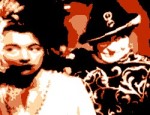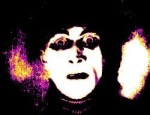Film Review

The Man with the Golden Arm was always going to be a controversial film. The Hollywood Production code tacitly prohibited any reference to drug addiction and so far no mainstream American film had broken this taboo. By the mid-1950s narcotics abuse had become a serious social malaise and director Otto Preminger was certainly justified in defying the censors. By this time, the Production Code, conceived in the early 1930s, was looking increasingly dated and its authority was being challenged in various quarters. Preminger's film would be one more nail in the coffin.
Although the film proved to be highly profitable, taking over four million dollars at the American box office, it was a daring piece of cinema that broke new ground, both in its style and subject matter. It provoked the critics and shocked audiences with its harrowingly authentic depictions of drug addiction and withdrawal. Two sequences stand out as being particularly courageous - one where the lead character Frankie (Sinatra) receives his fix at the hands of a ruthless dealer; another where the same character subjects himself to the ordeal of cold turkey in attempt to cure himself of his addiction. In both of these sequences, Sinatra gives an extraordinarily convincing performance, of the kind you would only expect to find in the grittiest of social realist dramas. The actor was nominated for an Oscar for his work on this film but on the strength of these two scenes alone he clearly deserved to win the award (instead he lost out to Ernest Borgnine for Marty).
The Man with the Golden Arm was a long-overdue reminder of the dangers of drug abuse and motivated many other filmmakers to tackle the same subject, often with far greater realism. The central flaw with Preminger's film is that it often feels too cautious about causing offence. It lacks the abject bleakness of Nelson Algren's novel on which it is based. Algren was originally hired to write the screenplay for the film, but was dismissed by the director after just three days. The author was appalled by resulting film and was incensed with the tagged on happy ending which he felt destroyed the central message of his story, that drugs destroy lives. In Algren's novel, the central character fails to overcome his addiction and ultimately kills himself. Preminger presumably felt that such a grim ending would be too hard for an American film audience and so opted for the more palatable Disney-style denouement in which everyone lives happily ever after (apart from the villains, who deserve all they get).
Had it not been for the Production Code and the fact that he knew he was treading uncharted territory, Preminger may have been more inclined to make a much darker film. At times, The Man with the Golden Arm feels like a film noir melodrama (of the kind that the director had previously excelled in) struggling hard to embrace the tenets of social realism but not quite making it. Some of the performances (notably the two female leads) are as wooden and unconvincing as the stage exteriors and the ending is so painfully contrived that it almost appears to have been swiped from another film. Yet it is the film's stronger points that win through in the end. Solid performances from Arnold Stang and Darren McGavin complement Sinatra's own remarkable tour de force turn; Sam Leavitt's stylish noir-like cinematography subtly emphasises the sheer unremitting bleakness of the oppressive world in which the hero Frankie exists; and Elmer Bernstein's unforgettable jazz score is the perfect accompaniment to the film's darkest moments. Not quite a masterpiece but a memorable and hugely significant film in the history of American cinema, and arguably Frank Sinatra's finest hour in front of a film camera.
© James Travers 2010
The above content is owned by frenchfilms.org and must not be copied.
Film Synopsis
Frankie Machine returns to his home town after a spell in prison where he was cured of his heroine addiction. He soon runs into his old friend Sparrow, who earns a crust by selling stray dogs, and Schwiefka, who used to employ him as a dealer in illegal poker games. Frankie rejects Schwiefka's offer of more work of the kind that landed him in jail. He is determined to start a new life and make an honest living as a jazz drummer. However, his wheelchair-bound wife Zosh doubts whether he has the ability to become a professional musician and, in urgent need of cash to pay for medical attention, she pleads with him to make use of his real talent, as a card dealer. Frankie's ex-girlfriend Molly is more supportive and allows him to practice his drum-playing in her lodgings, at the risk of upsetting her jealous boyfriend. When he meets his former drugs dealer Louis, Frankie once more succumbs to the craving he thought he had kicked but swears this will be his last fix. On the day before he is due to attend an audition with a jazz band that could seal his future, Frankie is persuaded by Schwiefka to deal in one more poker game. The game runs for far longer than Frankie had anticipated and, at the end of it, he is exhausted and in desperate need of another heroine fix. When Louis refuses to give him the drug, Frankie attacks him and hurries away to attend his audition, which proves to be a disaster. Now frantic to obtain money to pay for his next shot of heroine, Frankie returns to Molly. They learn that Louis has fallen to his death at Frankie's boarding house and that the police suspect Frankie of his murder. Molly convinces Frankie that his only hope of convincing the police of his innocence is if he is cured of his drug addiction. Frankie has no option but to go cold turkey. But is he strong enough to survive this ordeal...?© James Travers
The above content is owned by frenchfilms.org and must not be copied.
Similar Films
Here are some other films you may enjoy watching:- Wind Across the Everglades (1958)
- The Browning Version (1951)
- Saturday Night and Sunday Morning (1960)
- Los Olvidados (1950)
- Monsieur des Lourdines (1943)
Other related links:
Film Credits
- Director: Otto Preminger
- Script: Ben Hecht, Walter Newman, Lewis Meltzer, Nelson Algren (novel)
- Cinematographer: Sam Leavitt
- Music: Elmer Bernstein
- Cast: Frank Sinatra (Frankie Machine), Eleanor Parker (Zosch Machine), Kim Novak (Molly), Arnold Stang (Sparrow), Darren McGavin (Louie), Robert Strauss (Schwiefka), John Conte (Drunky), Doro Merande (Vi), George E. Stone (Sam Markette), George Mathews (Williams), Leonid Kinskey (Dominiwski), Emile Meyer (Detective Bednar), Jered Barclay (Junkie in Lock-up), Leonard Bremen (Taxi Driver in Lock-up), Paul E. Burns (Suspenders in Lock-up), Pete Candoli (Musician: Jazz Sequences), Harold 'Tommy' Hart (Police Officer Kvorka), Mike Lally (Bartender at Club Safari), Shelly Manne (Himself), Frank Marlowe (Yantek)
- Country: USA
- Language: English
- Support: Black and White
- Runtime: 119 min
French cinema during the Nazi Occupation

The very best of German cinema

The best of American film noir
